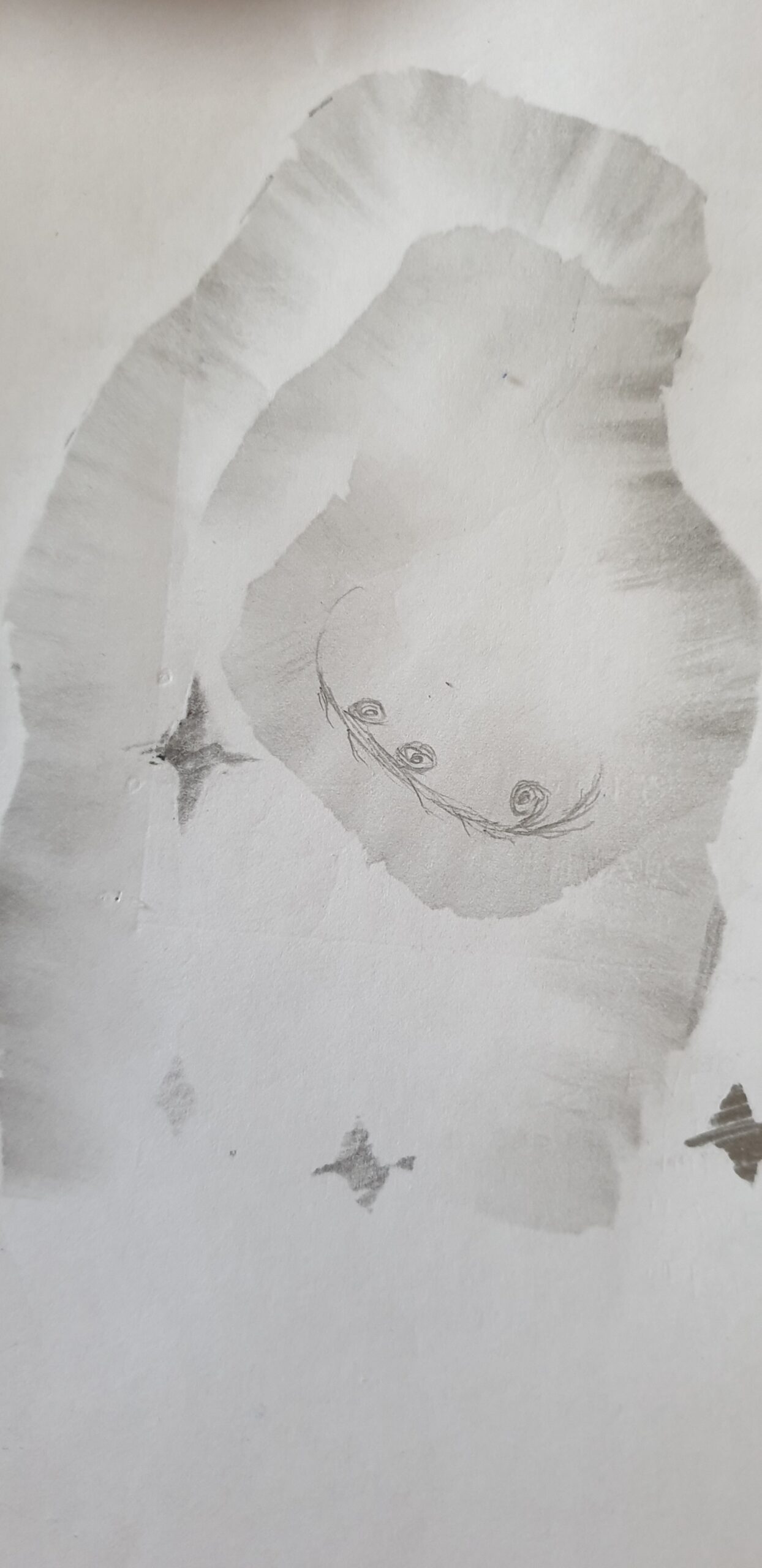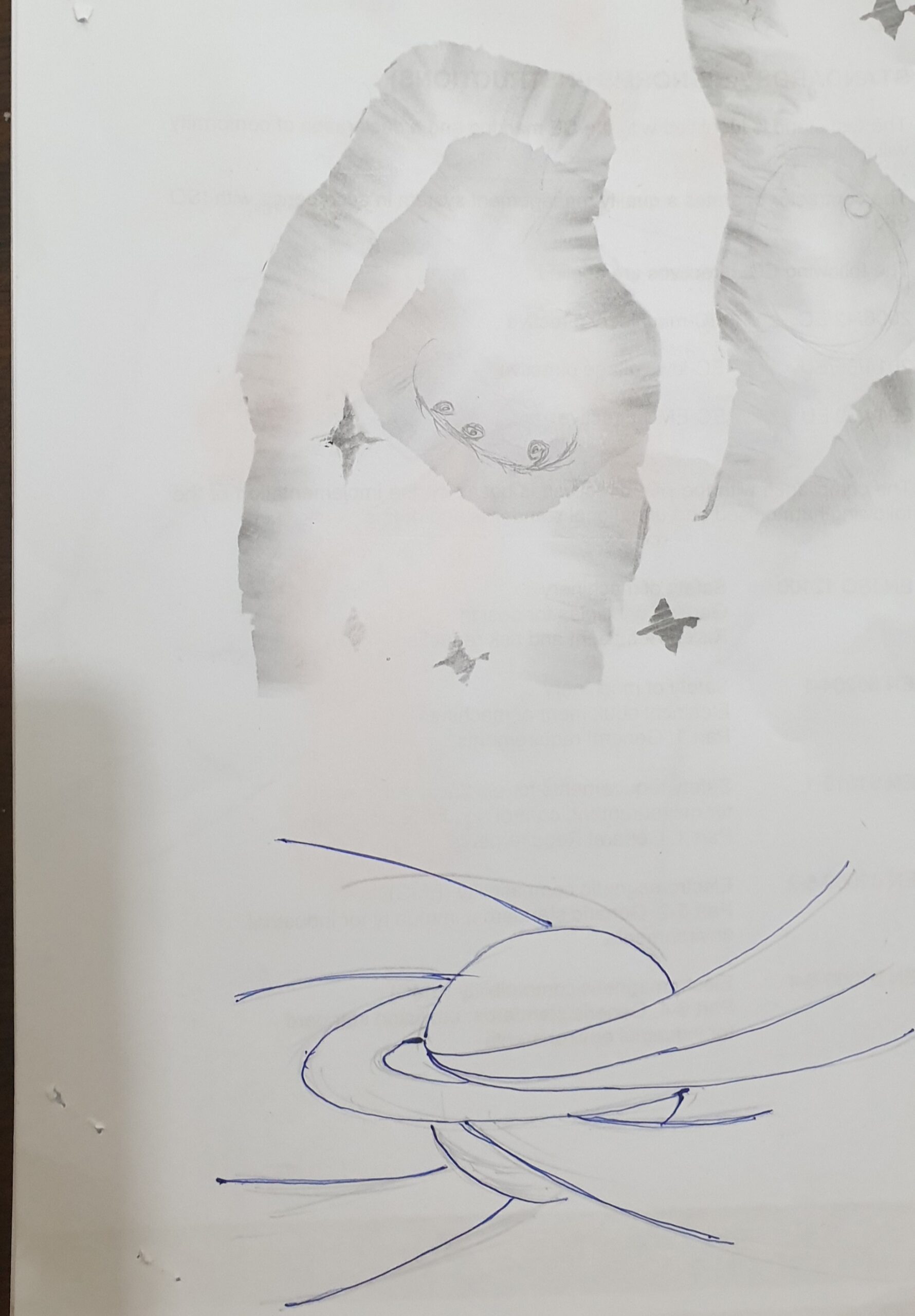SPACITY EXPLAINS STARS, PLANETS, MOON FORMATION
We addressed galaxy formation in the earlier section. Now let us see how the stars form. We already have a swirling galactic mass around an axis and along a plane.
In a galaxy, radius of curvature of the arc is not acute. So, there is no violent interaction of galactic mass when they move along the straighter arc. But among this swirling mass there are many local spots where the arcs of discharge are acute. They create discontinuity in the general flow of the galaxy. Acute nature of the arc also creates a whirlpool. This whirlpool forcefully brings all the local mass to the central area and smashes them violently. The temperature levels of the already hot gas now reach astronomical levels. High enough for the gas in the center to reach plasma stage. Thus, a star is born.
Each star system has a plane and axis that correspond to that of the mother galaxy. But not always. There may be some star systems whose axis may be skewed differently depending on how the ionized mass and the resultant discharge is skewed. This is the reason why we have Sun’s axis almost perpendicular to the axis of milky way.
The radii of curvature of the dominant discharge during star formation ultimately decides the size, density, luminosity and type of the star it will end up as. It also has a bearing on its lifetime and overall architecture of the planetary system.
In classical model of universe, the masses in the planetary discs are supposed to form mountain sized structures and are supposed to crash into each other forming the future molten core of the planet. These masses are travelling together in the planetary discs at negligible relative speeds. Even if they collide, the force that is violent enough to yield a molten core is missing. Let us see what MANTHAN has for an alternate explanation.
During Star formation, majority of the mass is used up in forming the parent star itself. However, violent centrifugal forces free up some mass that eventually becomes planetary system. Due to inertia of the original mass, this residual mass would follow a route around the star axis. Centrifugal force will coalesce this mass either into a flat disc orcylindrical ring/rings.
Planets formin the same way as stars. Accretion disc has mass that is ionized. Acute arcs of discharge leading to whirlpool that leads to molten cores. Molten cores do not reach plasma stage because there is not enough mass to begin with. These acute arcs and whirlpools may occur in more than one place in accretion disc around the star.
But eventually they will all lead to being accumulated into single planet. This is because of S3 Force. Since they are all at same distance from mother Star S2 is similar. Whereas S3 that depends only on mass, will speed up the smaller components and they will all eventually coalesce into one mass.
Arc of the dominant discharge again decides the parameters of the planet. Size, density, axis etc. Thus, it is very natural for Neptune to have an axis perpendicular to the solar plane yet follow the general swirl of the solar system.
Parameters of planet formation viz., Molten Core, whirlpool, discharge, Ionisation all need higher temperatures. So, all planet formation takes place near the star as temperature drops rapidly away from star. Planets migrate out as they gather mass.
Why are some planets rocky and others gaseous? Place pebbles of different size on a plate and give it a spin. Owing to centrifugal forces heavier ones remain inside while lighter ones move out. Similarly, when accretion disc revolves around the star, heavier materials lead to rocky inner planets and gaseous outer planets. So, the Mercury, Venus, earth, Mars are those rocky planets while Jupiter, Saturn, Uranus, and Neptune are gas giants. The Kuiper belt objects also may have started off as gaseous objects but solidified due to extreme low temperatures and absence of inner heat source.
MOON
In classical model of universe, the masses in the planetary discs are supposed to Just like stars have accretion discs, planets too have their own accretion discs. This is because the nature of forces acting are the same. Ionization, discharge, whirlpool, molten core etc. Except that the accretion disc responsible for the final moon is the one that formed after the parent planet took shape. Just the way planets form near the parent star, Moon too forms near their parent planets.
Many Moons do not have moonlets because by then the mass is either exhausted, used up or just not enough of it there to form anything sizeable.
Rocky planets having rocky moons is understandable. But Why do gaseous planets also end up having rocky Moons? In accretion disc around star, centrifugal force is supposed to segregate heavier rocky mass and lighter gaseous mass, but it is not an ideal process. With Gaseous material there may be heavier suspended particles moving along. But when gaseous planets end up having accretion disc, further straining of heavier particles leads to rocky moons.
OTHERS
Other bodies relate to irregular shaped asteroids, comets, planet rings etc. Each of these would have formed into spherical planets with molten cores or cold cores. The only way the irregularly shaped asteroids could have formed is if and only if two spherical formed objects collided and broke into smaller irregular shaped objects. Once broken the smaller pieces can never coalesce back since bigger rocks do not have the chance of charged particles generating electric current. They just keep moving in the resultant orbit due to inertia. Unless they fall into the main planet over many millions of years.



0 Comments